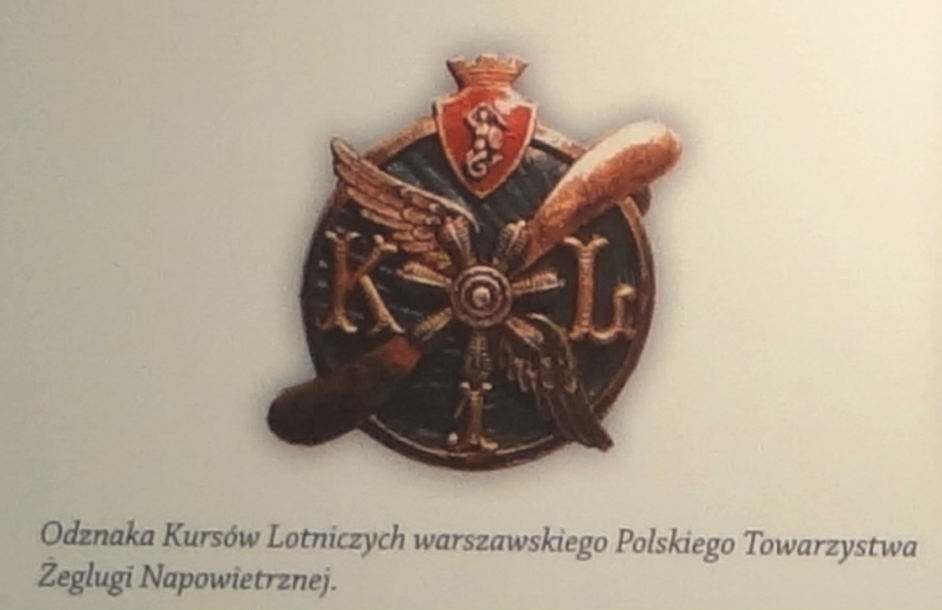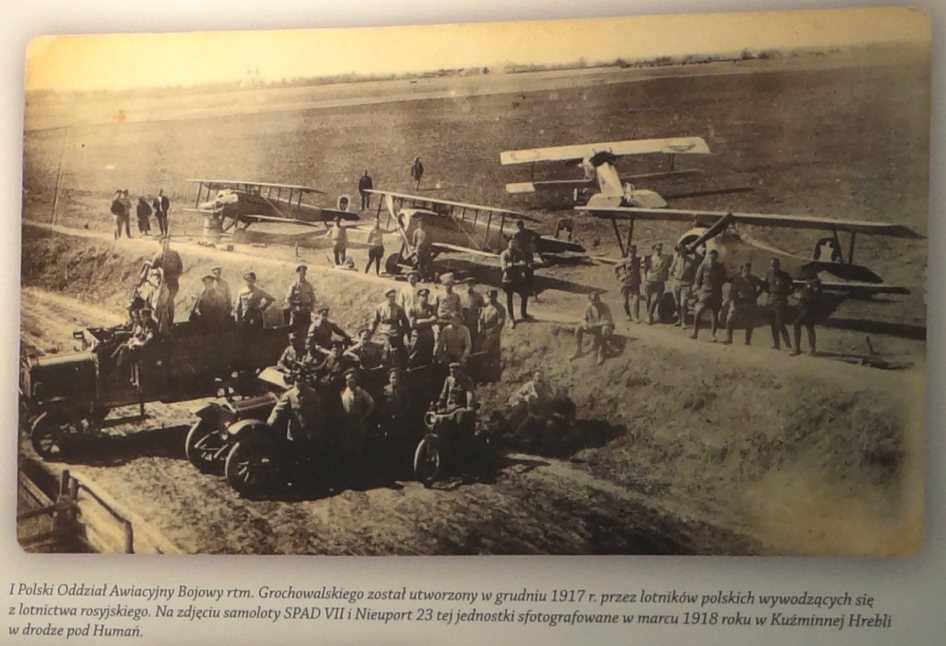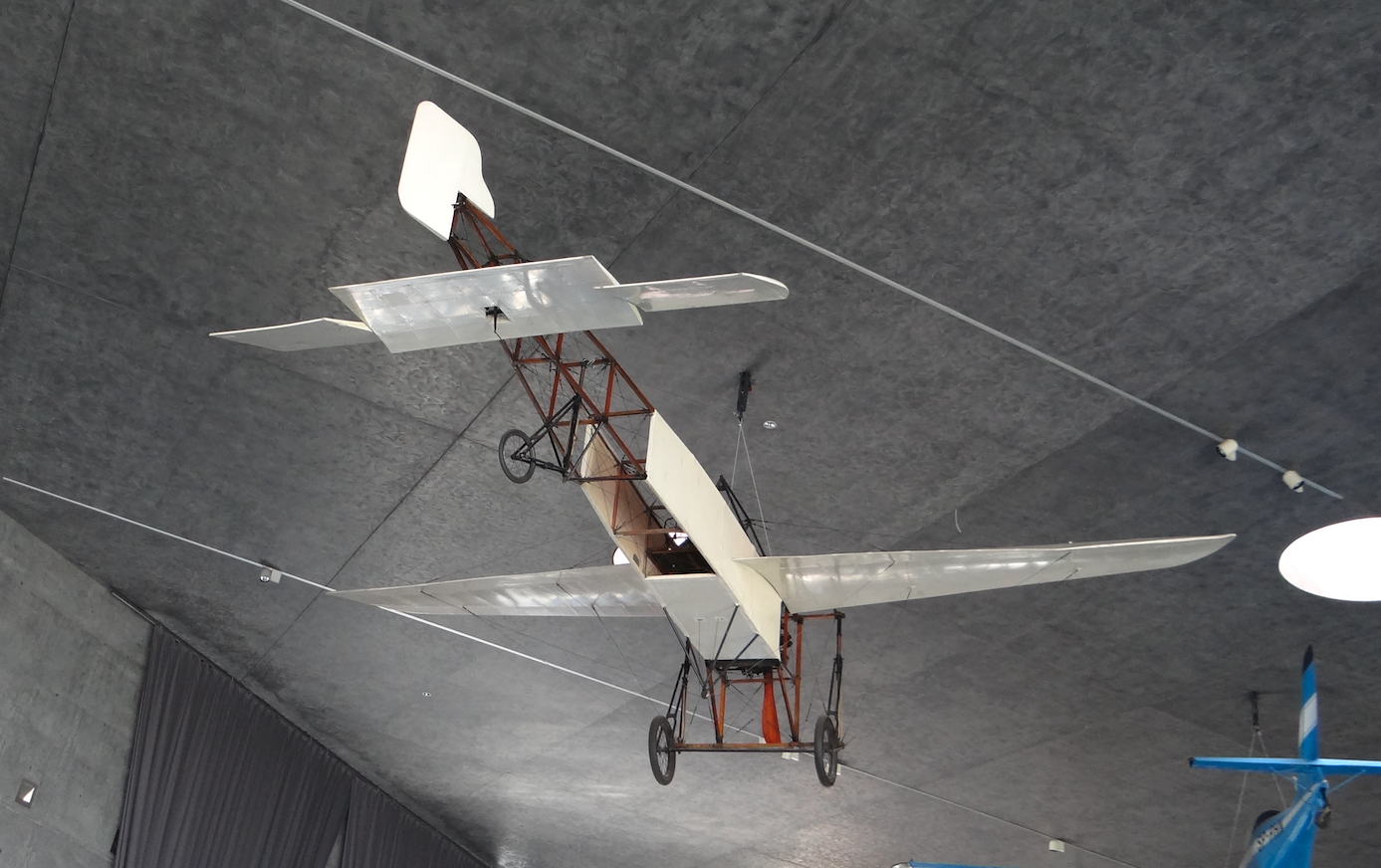Kraków 2017-05-09
Aviation training in Poland.
Part 1.
1908-1918.
Despite the lack of statehood, Poles started construction and aviation activities earlier. In the years 1884-1918, work on the construction of heavier-than-air flying devices under the partitions and around the world was undertaken by over 100 compatriots. They designed more than 150 airplanes, of which about 110 were built and attempted to take off and fly. Information quickly spread around the world that the brothers Wilbour and Orville Wright, on December 17, 1903, made a controlled flight, which was considered the first successful flight of the plane. Then there was information about the Brazilian constructor and pilot Alberto Santos-Dumont, who in October and November 1906 made successful flights near Paris on a biplane he built. But the world was really amazed by the French constructor and pilot Louis Bleriot, who, on July 25, 1909, flew over the English Channel on an airplane built by himself.
In 1908, the first Poles obtained aviation qualifications; Count Michał Scipio del Campo in France, and Rudolf Warchałowski in Austria. The exact dates of their licensing are unknown. However, it is known that on July 1, 1910, Bronisław Matyjewicz-Maciejewicz received a pilot diploma from the French Aero Club. Mr. Rudolf Warchałowski has become a precursor of flights with passengers. It is also worth mentioning the pilot Grzegorz Piotrowski, who on September 22, 1910, set the world record for the flight distance with one passenger on the distance from Saint Petersburg to Kronstadt with a result of 37 km. On October 30, 1911, Rudolf Warchałowski achieved the world record for flight endurance with three passengers, flying for 46 minutes and 46 seconds.
But aviation was also dangerous. On March 2, 1914, Gabriel and Piotr Wróblewski died in Lyon while trying to test a plane of their own design. They were the first Poles to die in the air. These events stimulated the imagination and increased interest in airplanes, very different from aerostats. Circles, organizations and clubs began to emerge, which set a goal for themselves; popularization of aviation, supporting constructors and aviation training. On February 1, 1917, the "First Aviation Courses of the Polish Air Navigation Society" were opened in Warsaw. In this way, for the second time (after the Warsaw AVIATA Society), aviation training was started.
Lviv.
In the territory of the Republic of Poland, under partitions, the first aviation center was Lviv. Already in 1884, the Aeronautical Society was founded, which published the periodical Aeronaut (Astronaut). One of the first of its kind in the world. The Society, however, did not last long. Lviv was a thriving academic center. Mechanical flight was dealt with by the machine-building department of the Polytechnic School, i.e. the later Lviv Polytechnic. In 1909, those interested in aviation formed a company called Awiata. Not to be confused with the Warsaw Aviation Society in Warsaw. The initiator was the engineer Edmund Libański. The full name of the organization was – "Galician Aviation Society AWIATA". The president of the society was Prince Andrzej Lubomirski. The task of Lwowska AWIATA was to popularize aviation through lectures, exhibitions and shows. Kites and balloons were presented. French pilots were invited to Lviv. It was in Lviv that the first Polish pilot, Scipio del Campo, who obtained a pilot’s license in France, demonstrated successful air shows. The horse racing track near Persenówka was used for these shows. In agreement with AWIATA, a joint-stock company of the same name was established in Lviv, which purchased two planes: Bleriot and Voisin. These planes were used for the demonstrations. On May 29, 1910, Lviv AWIATA purchased the first balloon that made a 140-kilometer flight.
Then, on November 6, 1909, the Air Force Association of Students of the Polytechnic School in Lviv was established. The fruitful activity of this union led to the organization of the first Polish Air Exhibition in Lviv in September 1910. The construction of the first planes in Lviv began in 1910, or possibly a year earlier. These structures were built in barns, which were called firehouses, and they became the first hangars. Until the Great World War, several aircraft constructions were built in Lviv, the attempts of which came out with varying luck. Various places were used as take-off fields, among them the Kulparkowskie Field and Błonia Janowskie.
Warsaw.
In the Kingdom of Poland, subordinate to the Russians (the Russian partition), aviatic operations encountered considerable difficulties. However, in 1898, Władysław Umiński, a writer and aviation activist, founded the first Aviation Circle in Warsaw, which initiated the period of organizing people interested in aviation. On February 12, 1909, during the general meeting of the Association of Technicians in Warsaw, the Circle of the Aviats with 15 members was established. Engineer Piotr Lubicz-Strzeszewski became the president. At the same time, the first aviation model shop was established by Wojciech Woyna. The Circle of the Aviats organized air shows and popularized aviation. On the initiative of the Circle, on September 16, 17 and 18 (19), 1909, the French pilot George Legagneux demonstrated the plane in the air over Warsaw for the first time. It was the Voisin-Farman plane. On November 15 and 18, 1909, another French, Baron A. Caters, was on the same plane. He came to Warsaw at the invitation of Prince Stanisław Lubomirski, brother of Prince Andrzej Lubomirski, president of the Lviv AWIATA. In mid-April 1910, another French Guyot flew in Pole Mokotowskie on the Bleriot plane. The Circle of the Aviats operated until October 22, 1910. At that time, Stefan Kozłowski, a Pole, tried to fly in the Siekierkowskie Field. He built his own plane and made several flights on it, even over 100 meters. On June 16, 1910, he damaged the plane and, due to lack of money, did not repair it anymore.
The Lubomirski family, especially the sons of Prince Eugeniusz Adolf Lubomirski, played a huge role in the development of Polish Aviation; Konstanty and Stanisław. They were very well educated and wealthy people. They also had numerous ties to Moscow. Stanisław Lubomirski was a financier, industrialist, promoter of automobile and aeronautics. Konstanty was also very interested in aviation, but he was a weaker organizer. They managed to obtain permission to launch the first Polish aircraft factory, which was established on May 21, 1910. At the same time, thanks to them, in June 1910, the Warsaw Aviation Society AWIATA was established in Warsaw, at Pole Mokotowskie, at Puławska Street. AWIATA’s task was the production of airplanes, aviation training and supporting talented designers. The president of the society was Stanisław Lubomirski, and the director was Konstanty Lubomirski. Czesław Tański was one of the members of AWIATA.
We will skip the production activity of AWIATA here, and focus on training activities. Both Lubomirski brothers made efforts to legalize AWIATA in the Imperial Aero Club of All Russia in St. Petersburg, which at that time was already a member of the FAI International Aviation Federation. On November 16, 1910, the brothers were admitted as effective members of the Aero-Club in St. Petersburg, and on December 6, 1910, the Council of the Imperial Aero-Club of All-Russia authorized the opening of the Aero Club Branch in Warsaw. Already at that time, AWIATA conducted aviation training according to the rules established by the FAI International Aviation Federation. However, this was not in line with the formal and legal operation, because AWIATA was listed in the Warsaw province as a factory. AWIATA’s activities, however, went much further. The aim was to create the Aero Club of the Kingdom of Poland. The statute of the organization was developed. The documents were submitted on June 15, 1911, at the Government Office. This was too much for the Muscovites, and on November 30, 1911, the application was rejected. It was not in the interest of the Muscovites that the Polish Aero Club should function in the Kingdom of Poland. And the Polish Aero Club had ambitious plans. One of them was to organize a circular flight around the Kingdom of Poland, as well as subsequent shows.
In the summer of 1911, count Michał Scipio del Campo made a test flight of the first Polish structure built by Stanisław Cywiński and Czesław Zbieński.
Henryk Segno, an excellent pilot, and later count Michał Scipio del Campo, was at the head of the Pilot School in AWIAT on Pole Mokotowskie. Mr. Henryk Segno felt aggrieved, but AWIACIE meant to raise the prestige of the school with the fact that it is headed by a count. Farman-Aviatic and Breliot XI planes were used in the training. Awiata has issued about 10 pilot certificates.
How was the training held then?
The training time depended on the student’s predispositions. The training fee was not too high, but the student bore all costs for the destruction or necessary repair of the machine. Theoretical training covered engine operation and aircraft control system. There were also basic principles related to weather conditions, especially knowledge of winds. The first taxiings took place around the take-off area in the company of an instructor. But the engine was throttled, preventing it from picking up so fast that the plane could lift off the ground. During these taxiings, the student learned how the plane reacts to the movements of the controls. When the instructor determined that the student could take off, the motor was re-regulated to the nominal speed. The instructor remained on the ground, risking nothing, and the student made his first flight and was immediately independent. After take-off, the student raised the plane to a height of 10-20 m, stabilized the flight, and then made a large circle over the airport. The landing consisted of going straight to the take-off area, lowering the altitude to about 1-2 m and switching off the engine above the field. The plane touched down gliding.
In January 1912, the tsarist authorities revoked AWIAC’s operating license. In March 1912, the invader closed down the production plant. The property was taken over by the tsarist army. In the buildings of AWIATA, the invader set up his own aviation school, which was a branch of the Aviation School in Gatchina (45 km south-west of St. Petersburg). On November 17, 1912, 32 officers, 50 soldiers and several flight instructors came to Pole Mokotowskie from the Military Aviation School in Gatchina. For 5 months, until the end of March 1913, aviation training was conducted in Pole Mokotowskie. After its completion, the planes were transferred to the fortresses in Modlin and Brest-Litovsk. In Pole Mokotowskie, the invaders placed a (aeronautical) balloon company. All this was related to political tension and the drive to war by large European countries: Germany, Russia, France, Austria-Hungary. After the outbreak of the Great World War, the Prussians entered Warsaw and took over the AWIATY facilities. They launched a branch of the Albatros aviation plant and the School of Observers here. They built new facilities, including workshop buildings and new, more hangars.
Still during the Great World War, on February 1, 1917, the "First Aviation Courses of the Polish Air Navigation Society" were opened in Warsaw. Thus, for the second time (after the Warsaw AVIATA Society), aviation training began. The first course began on February 26, 1917 and was completed by 73 people.

During the great world war.
During the Great World War, many Poles obtained a pilot’s license. It was different in different partition armies. In the initial period, the flying personnel came mainly from the Austro-Hungarian army and the Russian state (the so-called whites).

In the German army, the percentage of Polish pilots was large, but no Polish aviator achieved the rank of officer. The Germans cared very much about it. In the Austrian and Russian armies, Polish soldiers rose to officer ranks. They were not only pilots, but also observers. At that time, the observer was the aircraft commander and always an officer. The path to an aviation career has always led through a different type of weapon. First you had to be a foot soldier, cavalryman or artilleryman to be assigned to an aviation course.
Because many airmen died during the great world war. Individual armies developed their own systems and criteria for recruiting candidates for airmen. At that time, little attention was paid to physical health: reflexes, perceptiveness and self-control. It was assumed that if a young man was in the army and had not died yet, then he was good. There were no special medical boards examining young people for their fitness to serve in aviation. In many armies, candidates for pilots were searched for among cavalrymen. It was about using their ability to balance and unite with the horse that would now be winged. And in the event of an accident and the salvation of the aviator, he was encouraged to take off again as if he had fallen off his horse.
At the end of the Great World War, certain elements of "aviation medicine" began to be used to reject those who were not worth training. The French method was that the candidate was shot unnoticed with a revolver right behind the head. The candidate’s reactions were assessed, especially susceptibility to nervous shock. The Americans focused on the body’s response generated by the inner ear system, the labyrinth. The candidate was seated on a swivel chair and shaken very quickly. If he vomited it was judged not to be fit. Years later, it was found that the right candidates were rejected in this way. British medics approached the matter in a different way. They formed a commission under the command of Maj. Flack. The primary tester was "Flack’s Bag". It was supposed to assess how high the future pilot on the plane could rise without using the oxygen system. The minimum was to be 20,000 ft, or 6,096 m. The test lasted until the end of 30 years, although it was known that man, like every living thing, needs oxygen, and four minutes without oxygen for the brain is the beginning of his death. All three of the cited tests turned out to be incorrect. Nay. They created the belief that an aviator is a super-human. Fatigue, lack of concentration and making mistakes do not concern him.
Written by Karol Placha Hetman

